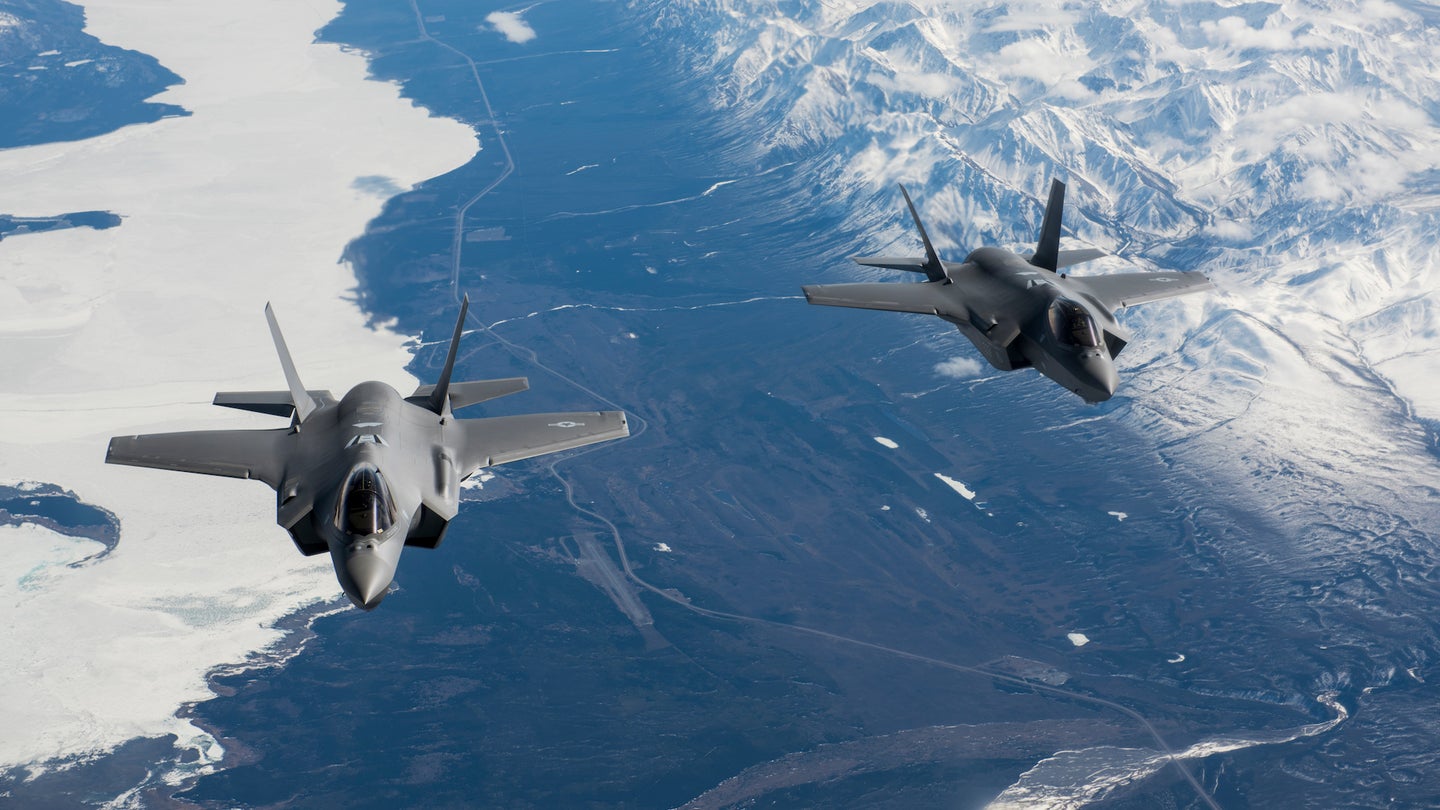US Air Force fighter jets conduct back-to-back intercepts of Russian aircraft near Alaska
Not now, Ivan!

U.S. Air Force fighter jets intercepted a group of Russian military aircraft off of Alaska on Tuesday, the U.S. military’s second such intercept in as many days, North American Aerospace Defense Command (NORAD) announced on Thursday.
Two Air Force F-35A fighter jets, accompanied by a pair of F-16 Fighting Falcons, an E-3S entry (AWACS), and a pair of KC-135 Stratotanker refueling aircraft, intercepted the Russian formation as it approached the Alaska Air Defense Identification Zone (ADIZ).
The Russian aircraft — a pair of Tu-95 BEAR-H bombers and a duo of Sukhoi Su-30 and Sukhoi Su-35 fighter jets — “remained in international airspace and did not enter American or Canadian sovereign airspace,” NORAD said in a statement.
The intercept came on the heels of an incursion into the ADIZ by a separate quartet of Russian aircraft the previous day that also included a Tu-95 BEAR-H bomber and Su-35 fighter aircraft.
In response, a pair of Air Force F-16 fighters conducted the intercept supported by a pair of F-35A fighters, an E-3S entry (AWACS), and a pair of KC-135 Stratotankers, NORAD said in a statement.
Subscribe to Task & Purpose Today. Get the latest military news, entertainment, and gear in your inbox daily.
Russian military aircraft frequently test the boundaries of American and Canadian airspace off the coast of Alaska and have since the former resumed ‘Long Range Aviation activity’ (as NORAD calls it) back in 2007.
According to NORAD, the command averages between six and seven intercepts of Russian military aircraft in the ADIZ annually, although the military has occasionally experienced rates as high as 15 intercepts annually.
In June 2020, for example, NORAD scrambled aircraft on six separate occasions to intercept groups of Russian aircraft as they penetrated the ADIZ.
But this current pair of Russian intercepts comes amid a particularly unusual time for the airspace above North America. Following the shootdown of a Chinese spy balloon off the coast of the Carolinas earlier this month, the White House is reportedly “racing” to assure Americans that the government is keeping the skies clear of danger.
That appears to include shooting down anything that moves: the week after the Chinese spy balloon shootdown, U.S. President Joe Biden and Canadiana Prime Minister Justin Trudeau ordered the downing of a trio of flying “objects” in the skies above North America even though senior government officials have been unable to provide additional detail as to the origin and composition of them.
“Because we have not been able to definitively assess what these recent objects are, [President Biden] wanted to act out of an abundance of caution to protect our security and in our interest,” Assistant Secretary of Defense for Homeland Defense and Hemispheric Affairs Melissa Dalton recently told reporters.
“So, we will remain vigilant. We have made these enhancements to — to our radars. And the operations this past week have been successful in — in bringing down these potential threats.”
Indeed, NORAD was quick to tamp down any connection between the incidents, noting that the Russian flight activity “is in no way related to recent NORAD and U.S. Northern Command operations associated with airborne objects over North America during the last two weeks.”
Still, Russia may interpret senior DoD officials increased vigilance for incursions as a sign to think more carefully about testing American airspace going forward.
The latest on Task & Purpose
- Here’s why the Marine Corps strapped a rare electronic warfare LAV to the deck of a warship
- Shot fired after intruder breaks onto Andrews Air Force base
- That time a US Navy submarine got a confirmed kill on a train during WWII
- Coast Guardsman saves man hours before graduating from rescue swimmer school
- JTAC vs TACP: A user’s guide to the troops who call in close air support
Want to write for Task & Purpose? Click here.
